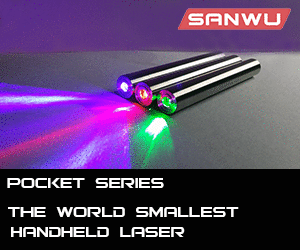- Joined
- Dec 14, 2010
- Messages
- 315
- Points
- 0
So I'm not into the electrical engineering side of things, I'm more of a software dev/testing sort... however with lasers I've been seeing a LOT of technical people floating around that seem to know their stuff. (I don't know enough to say yes or no, but since other people that also seem to know their stuff agree, I have to conclude that they both know their stuff or it's an elaborate hoax and I'm not real. But I digress)
Anyway... I recently repaired a laser pointer that I had previously thought to have been dead, but because of where the diode came from and the power source I'm using, I know the diode is capable of being pushed MUCH harder than it is. (Which I want to do)
So, without getting too crazy, I'm curious about some of the common things folks do when putting together their home-made/custom lasers... Like measuring current draw - I have a digitial multimeter, and I know how to measure resistance and how to measure voltage... But the other stuff escapes me.
Does anyone know of any tutorials that exist that will help me get started in the basics of electrical "stuff" for the lack of a better term?
Anyway... I recently repaired a laser pointer that I had previously thought to have been dead, but because of where the diode came from and the power source I'm using, I know the diode is capable of being pushed MUCH harder than it is. (Which I want to do)
So, without getting too crazy, I'm curious about some of the common things folks do when putting together their home-made/custom lasers... Like measuring current draw - I have a digitial multimeter, and I know how to measure resistance and how to measure voltage... But the other stuff escapes me.
Does anyone know of any tutorials that exist that will help me get started in the basics of electrical "stuff" for the lack of a better term?



